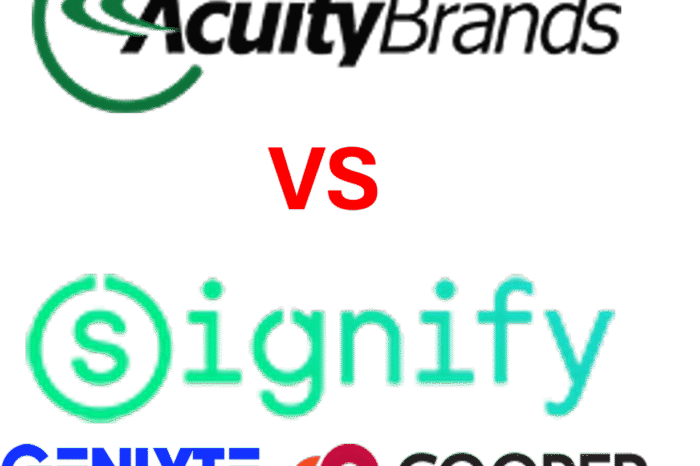Acuity Delivering on All Cylinders in Q3
 Acuity announced their Q3 results yesterday. In an electrical materials market that continues to be rather anemic, the lighting market continues to outperform and Acuity remains the leader among large lighting players. It appears that Acuity is delivering on all cylinders.
Acuity announced their Q3 results yesterday. In an electrical materials market that continues to be rather anemic, the lighting market continues to outperform and Acuity remains the leader among large lighting players. It appears that Acuity is delivering on all cylinders.
While they’re not part of the developing Cisco digital initiative, sales results show that customers are responding to them. While customers are accepting of their products, the question for electrical / lighting distributors becomes how do you differentiate yourself to earn the business Acuity is generating? Is it relationships, quality of salespeople to support the sale, “being in the right place to accept the order” or is it bringing the ideas within your local market?
Now, insights from Acuity’s Q3 results
- Net sales up 25%! Up to $852M
- Estimate that their sales volume grew 16%
- Distech and Juno contributed 12% of the growth, the 3 point different tied to foreign currency and mix)
- 97% to total net sales are in North America
- Record results for gross profit margin (shows that leadership, differentiated strategies, technology (product innovation) can be leveraged into profitability … comes down to customers wanting your product … and then operational efficiency). Adjusted operating profit is up to 17.2% (1.4 point improvement from prior year). Adjusted gross profit margin was 44.5%, up 1.3 points.
- Expanding into key channels and geographies
- Growing building automation solutions (is this a market for distributors … diversification? acquisitions?)
- Have cash, so far this year, of over $300M. (could they be looking for more acquisitions knowing this amount will increase to $500M “soon”? Begs the question of “where is Acuity going over the next 3-5 years … how will it expand its opportunities and what could it mean for distributors? Also, how does this compare with their competitors’ ability to invest / grow / diversify?)
- LED now represents almost 60% of total net sales.
- Seeing increased interest from customers in how to control and utilize light sources, hence diversifying opportunities and increasing revenues for digital / control / smart platforms.
- Juno integration is essentially completed. Seeing increased quote rates for Juno products.
- Touted new “Smart Lighting Supplier” relationship with Target which can provide significant revenue from Target but more importantly is a credibility builder for other superstores, malls, strip malls and more. Distributors may be able to use this case study / sales approach in their local markets for strip malls and more.
- Seeing opportunities in healthcare, education, industrial, roadway, commercial office buildings. Business trending a little more to renovation.
- There was a reasonable amount of conversation regarding Distech, building automation and the HVAC market. (A thought occurred, could Acuity look at the HVAC market as another channel for lighting fixtures? As part of a holistic sale? Same with building automation distributors and integrators? Will lighting agents lead the charge by working with the end-user / engineer and then the “customer” decides where / how to buy the product? Have any distributors run across Acuity sold via non-electrical channels?)
- Outdoor lighting business growing at an “above market rate” (Perhaps distributors should consider how they can utilize their ERP systems to group products by type or application rather than by manufacturer (more of a category management mentality) so they can assess their success / opportunities and be supplier agnostic?)
Aside from the above comments in italics, some thoughts / questions:
- As a distributor, how is Acuity as a partner? Are you able to drive sales or are you servicing sales?
- From a competitive viewpoint, they appear to be a clear leader, at least for a broad-based play (there could be better solutions / products for specific products or opportunities), but how should others compete? Should others refine their vision and go on an aggressive acquisition binge to gain product, technology, people and scale or are others relegated to “lower” level status?
- If you’re a non-Acuity distributor, how are your suppliers helping you compete or do you need to be the one driving your local strategy and then integrate “best in class” suppliers and rely on your staff?
- Which begs the question, what percent of your lighting business is “self-serve”, “created / driven by you” or “rep provided?”
The lighting market remains the fastest growth market in the industry. If you’re not getting it …
Thoughts on the lighting industry, Acuity or others?






















